Just the name of one of Barcelona’s most historic districts, the Gothic Quarter, or Barri Gòtic in the local parlance, is enough to lure armies of locals and visitors here. The district stretches from La Rambla (Spain’s most famous pedestrian lane) to Via Laietana and from Ronda de Sant Pere to the Mediterranean coastline. The Gothic Quarter is made up of—you guessed it—medieval era buildings. If that were all, it would still be enough to inspire a stroll.
The Gothic Quarter, though, happens to be part of the oldest swath of Barcelona. Even the ancient Romans planted themselves here. If you know where to look, you can even see the remnants of a Roman wall and other things they left behind.
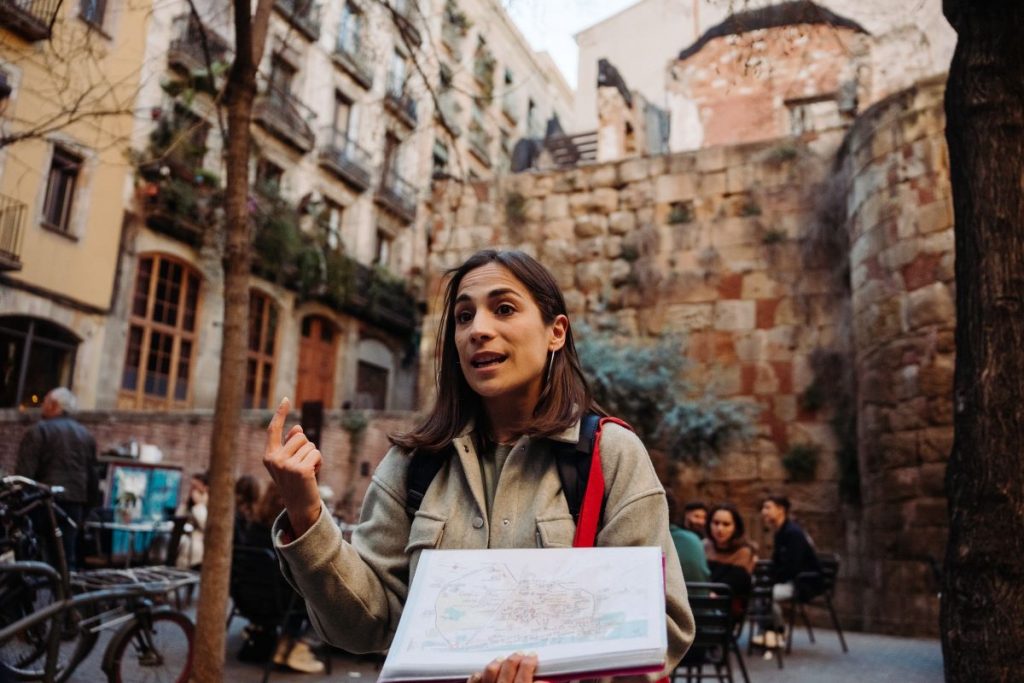
And speaking of which, we have a tip on how to find all the best, Instagram-worthy, tastiest, and in some cases, most local spots in the Gothic Quarter. Take a guided food tour in Barcelona. You’ll visit at least three historic, taverns and tapas bars in Barcelona. You’ll sample classic Catalan tapas delights while strolling the narrow streets of the Gothic Quarter alongside an expert local guide who will give you the inside dirt on the neighborhood, both literally and figuratively.
If you want to do it DIY, be our guest. If you want to amble around with a local expert, you’re also our guest. Whatever the case, below is a chorizo-flavored taste of what you’ll get on this tour. You’ll explore the local tapas bars of Barcelona and bask in the history of the Gothic Quarter.
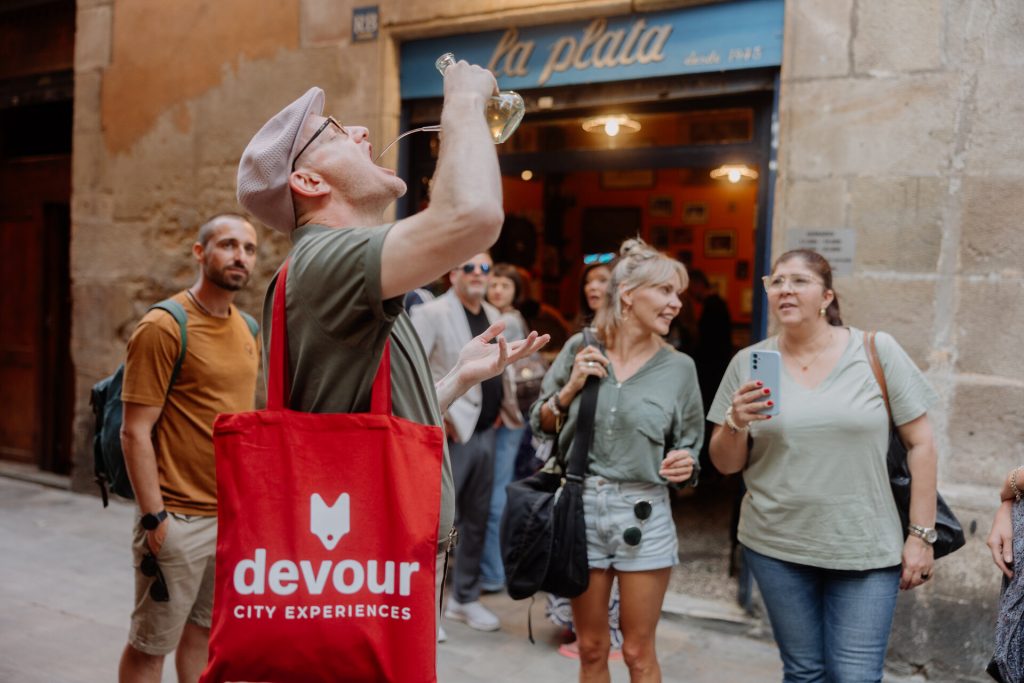
Gothic Quarter Tapas Bars
Bar La Plata
Point yourself to La Plata, one of the best tapas bars in Barcelona, for one thing: fried sardines. Don’t be put off by the usual line; it goes fast. Grave on fried sardines, sip tapped wine, and gawk at the walls that are crammed with framed photos and art. La Plata is a family-run spot you don’t want to miss. It is often named as one of the best tapas bars in Barcelona.
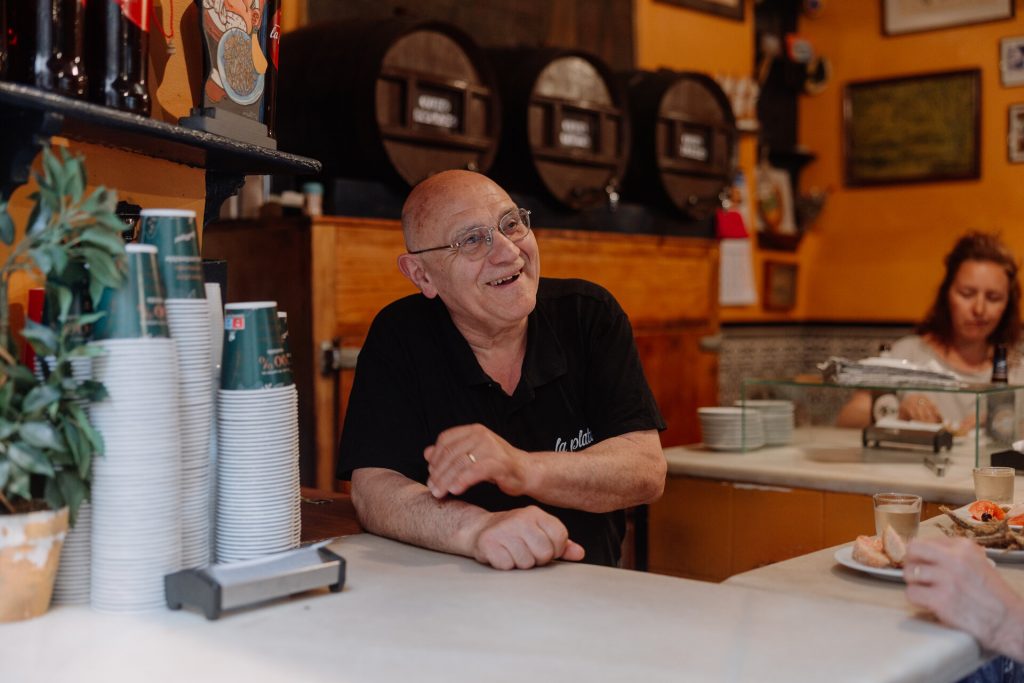
Bar del Pi
When visiting this bar on the our Tapas, Taverns and History tour, you’ll hear all the intriguing details about the fact that for a century, local musicians, artists, and students hung out at Bar del Pi. It puts the “bar” in “Barcelona.” Walk to the back of the bar to spy some original art on the walls by Rafael Alberti, Mariscal, Serrat, and other artists. Cozy up to the bar—or if the weather is agreeable—grab a table outside. Nosh on cod-stuffed peppers and make sure you order a bomba or two—the massive croquettes that are famous at Bar del Pi.
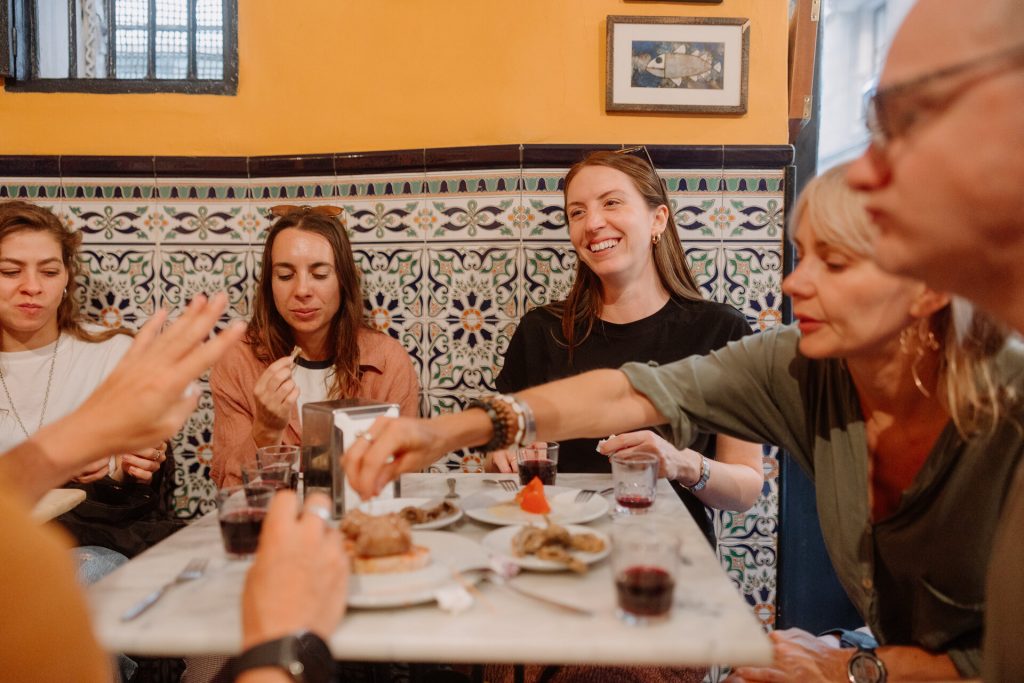
Bodega La Palma
Bodega la Palma began life at the beginning of the 20th century as a shop selling a little big of everything. Hence, the “bodega” in the name. Over the years, though, it evolved into the high-ceilinged ambient tapas bar you see today. Stand at the original marble bar and indulge in smoked cod bandrada, a truffle-spiked fish dip. Try some of the best patatas bravas in the city and crispy squid croquettes.
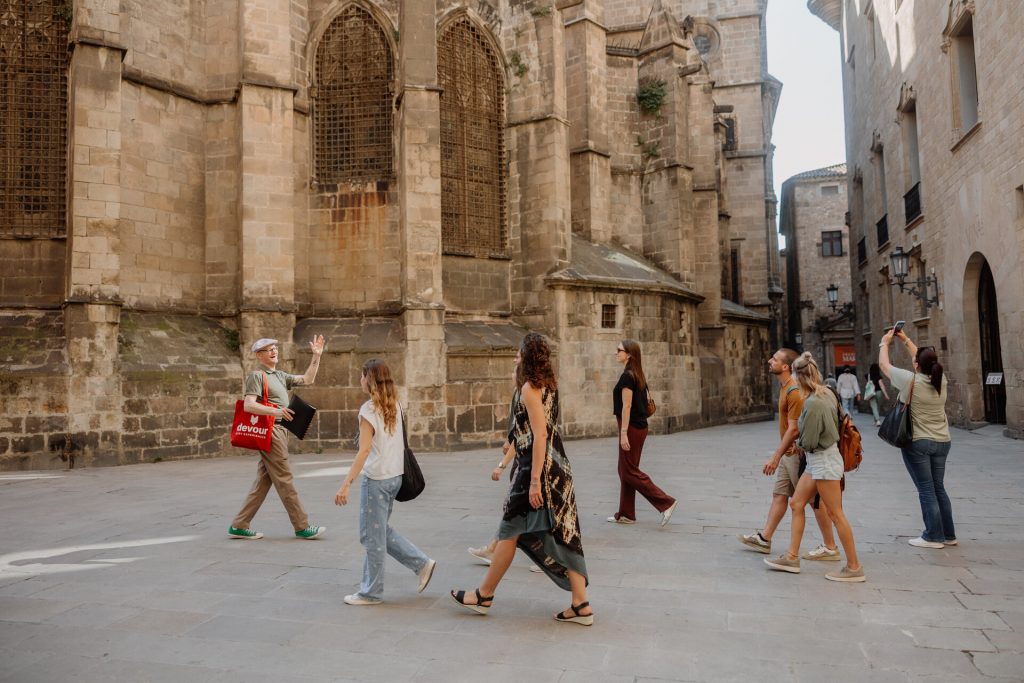
La Alcoba Azul
This diminutive bar has stone walls and atmosphere to the nth degree. In the evening, candles light each table. La Alcoba Azul serves up a menu of traditional tapas, including cod carpaccio and a molette stuffed with curried calamari.
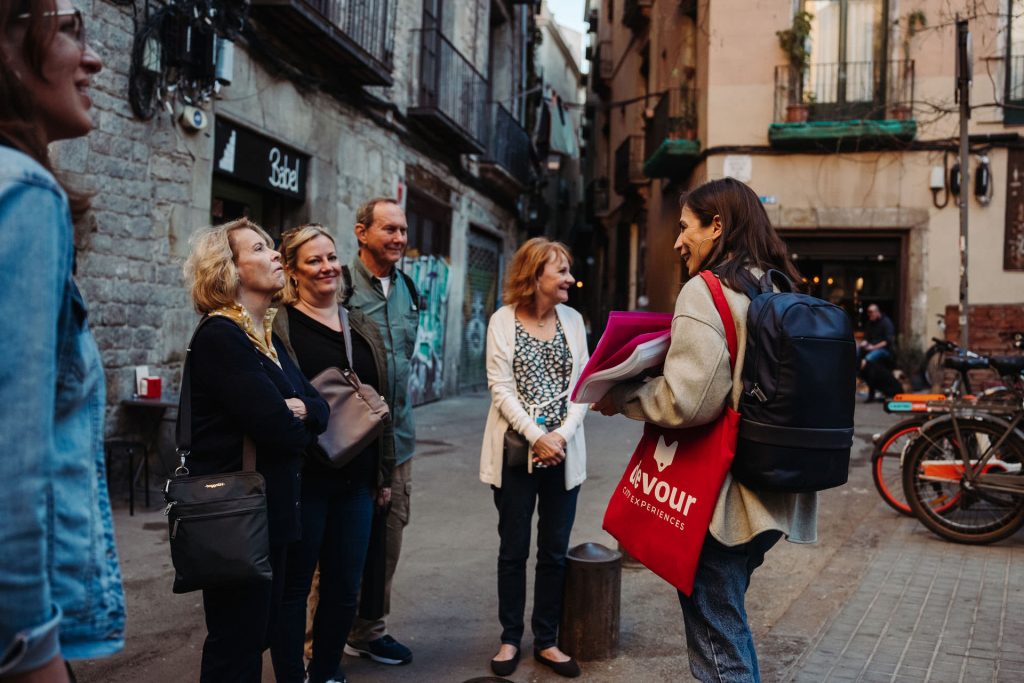
L’Antic Bocoi del Gòtic
People come to L’Antic Bocoi del Gòtic for a variety of reasons. They chill out in its dimly lit atmosphere highlighted by low brick walls, drink high-quality local wine, and bask in history (one of the walls supposedly dates back to Roman times). But there is one thing that unites everyone who comes to L’Antic: coca, a delicious Catalan flatbread that is topped with various seasonal ingredients. Don’t leave the Gothic Quarter without trying it at one of the best tapas bars in Barcelona.
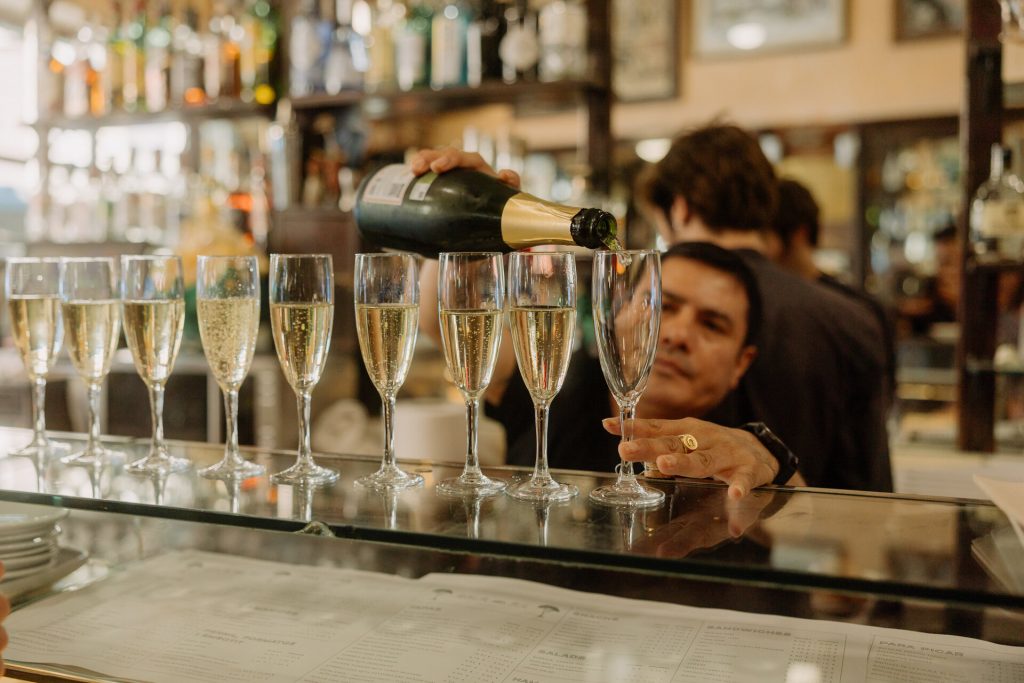
La Vinateria del Call
For several decades, La Vinateria del Call has been feeding locals and visitors alike topnotch tapas in the form of tigres (fried stuffed mussels), tender veal meatballs, rich oxtail, and creamy jamon croquettes. The bar also has an enormous selection of local cheeses. You may nor may not visit La Vinateria on the guided walking tour, but you should definitely seek it out for its wine and cheese. It is certainly one of the finest tapas bars in Barcelona.

Some Other Can’t-Miss Sites
The Square of the King
Plaça del Rei, or King’s Square, is a small space with a big history. For starters, it was supposedly here where Iberian monarchs Ferdinand and Isabel met Christopher Columbus upon his return from his first voyage in the New World.
The reason they met here? It’s because this is the location of the Palau Reial Major, the official royal residence in Barcelona, a 14th-century medieval complex of buildings and lavish rooms where Catalan monarchs lived out their days.

Saint Philip
Welcome to Plaça de Sant Felip Neri, or the Square of Saint Philip Neri, named for Filippi Romolo Neri, a 16th-century Catholic priest from Italy who founded the Congregation of the Oratory, a society of men who are bonded together by their vow to charity. The oratory is on this square. A church named after Sant Flip is also here. All the buildings are in the Renaissance and Baroque style.
In 1938, during the Spanish Civil War, Francisco Franco, the man who would become dictator of Spain until his death in 1975, had the square bombed, particularly the church. The explosion killed 30 people, most of whom were refugee orphans from Madrid who tried to escape the war by coming to Barcelona. Unfortunately, the war caught up with them. As volunteers were pulling the victims from the wreckage, a second bomb landed in the square and killed an additional 12 people.
If you happen to be on a guided walking tour, the guide will go into much more captivating detail about the long and intriguing history of this square.

Plaça Sant Jaume
Sometimes referred to as the “lungs” of Barcelona, this large plaza is dominated by the Barcelona City Hall and Palau de la Generalitat, making it the administration center of Catalonia. The square was also the heart of Barcino, the ancient Roman city that is now Barcelona. The city’s Roman-era forum was here, as well as some important temples. On nearby Carrer Paradis (Paradise Street), you can still see four columns from the erstwhile Temple of Augustus.
The name of the square is taken from the Church of Sant Jaume, a medieval structure that was razed in the early 18th century to make space for government buildings.
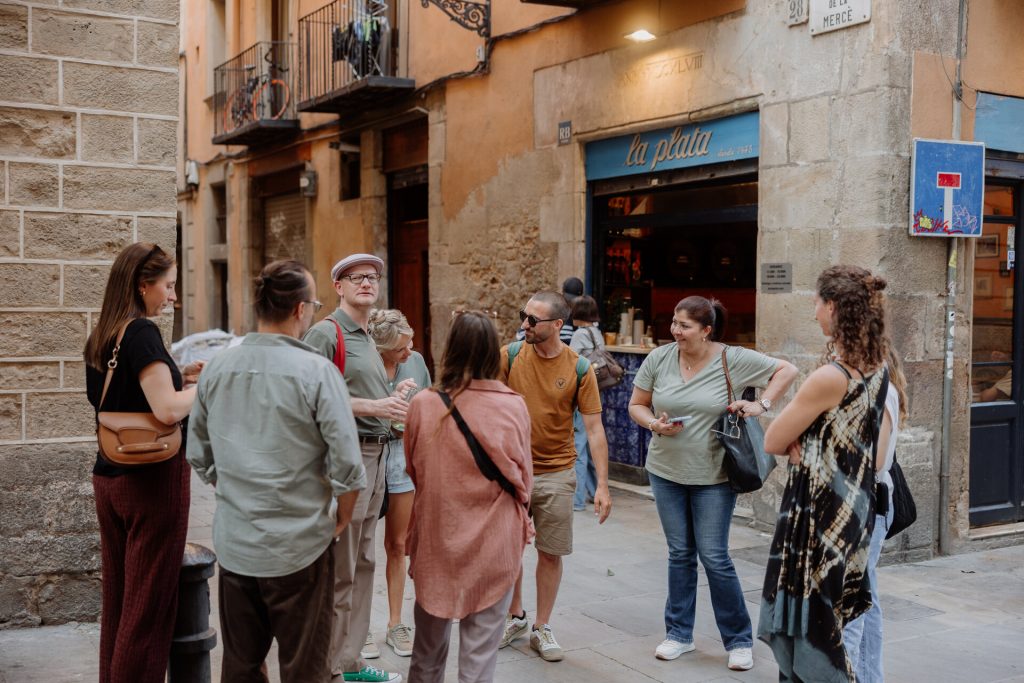
Taking a guided walking tour in the Gothic Quarter to discover the neighborhood’s rich history as well as the even richer local tapas bars of Barcelona is the best way to spend your time in this Catalan metropolis. You’ll know the city better. Thanks to the local guide that you’ll be walking shoulder to shoulder with for a few hours, you’ll know the best tapas bars in Barcelona to have a Catalan feast.
FAQs
Why should you take a tour?
You came to Barcelona to see historical sites and to eat delicious Catalan cuisine, right? So, make the most of it by going on a guided walking tour. A local expert will take you to a handful of places you may not have stumbled upon on your own. These include very local tapas bars and taverns where you’ll eat like a Catalan.
What time does the tour start and how long does it last?
It depends on what day you want to go. On Wednesdays, Thursdays, and Friday and Saturdays, for example, there are three tours offered, starting at 10:45 am, 6:30 pm, and 7:30 pm. This allows you to either walk and feast at lunch or at dinner time. On some of these days, there’s often an additional tour added that starts at 4:30 pm or 5:30 pm. On Sundays and Mondays, the tour begins at 6:30 pm and 7:30 pm. Sundays, there’s often just one tour offered that starts at either 6:30 pm or 7:30 pm. The tour lasts three and a half hours.
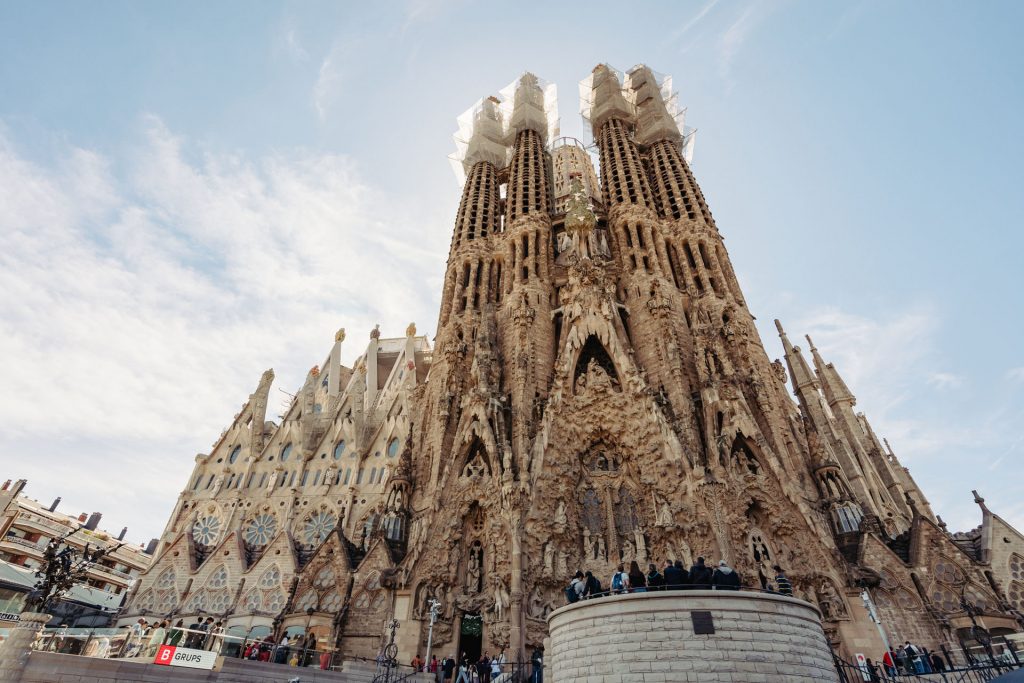
When is the best time of the year to go to Barcelona?
Shoulder season is the best time to come to Barcelona (April-May or September-October). The crowds are fewer, hotel prices might be slightly more affordable, and the weather is not too hot and not too cold.
Ready to explore the Gothic Quarter? Dive into different tapas bars in Barcelona on our Tapas, Taverns and History Tour. Our local guides will take you to the best places, and introduce you to the best tapas of the neighborhood!
